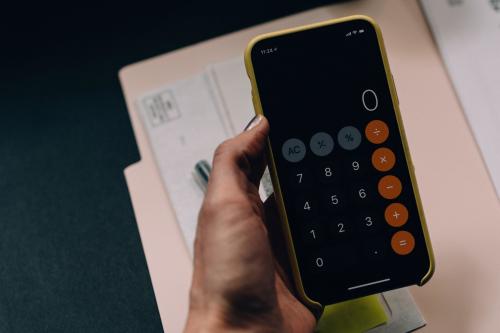Prepare for Life’s Surprises with an Emergency Fund
Have you ever been caught in a sticky situation that requires some quick cash to get out of? If you have, you’re not alone. Whether it’s a leaky roof, a broken appliance, car repairs, or a change in job status, life is full of stressful surprises. Still, 3 in 10 adults say they don’t have enough in savings to handle a $400 emergency expense.
Having an emergency fund—a nest egg of money set aside to cover unexpected expenses—can help you breathe easier during stressful times. Below are some simple tips that will help you start (and grow!) your emergency fund.

How Much Is Needed
A good rule of thumb is to set aside enough cash to cover three to six months of essential living expenses (e.g., housing, car payments, child care, and household bills). This may seem like a lot of money, but saving is easier when you put away a little at a time. Think about it this way: if you direct deposit just $25 per week into your account for one year, you will have saved $1,300. And if you can bump that weekly deposit to $40? Your emergency fund will have a healthy balance of $2,080 after just one year!
Emergency Fund Saving Strategies
To accelerate the process, you might also try out one of these saving strategies:
- Designate larger chunks of cash from your tax refund or a company bonus to put in your emergency fund.
- Skip your daily coffee indulgence for a month or two and direct those dollars to your emergency fund.
- Organize a garage or yard sale and contribute the profits to your emergency fund. You’ll reap the rewards and declutter your home at the same time!
Ways to Save
Choosing the right type of account for your emergency fund is also important. You want to have easy access to the funds, but stuffing cash under the mattress or into a jar could tempt you to make the occasional withdrawal for nonemergencies. To fight the urge to impulse spend, open a low-fee bank account. An even better option is to find a bank that incentivizes you to open a new account with a cash bonus. Keep the ATM card at home instead of in your wallet, or forgo getting one altogether to minimize the chance you’ll spend that money on nonemergency items. Last but not least, a money market account may offer a higher interest rate than a regular savings account, helping you grow your balance over time.
If you do have to dip into your emergency fund to cover an expense, always replenish it as quickly as possible. You never know when lightning will strike. But when it does, you’ll be prepared.


